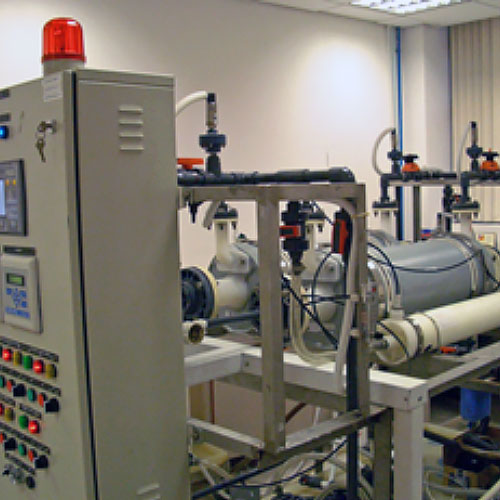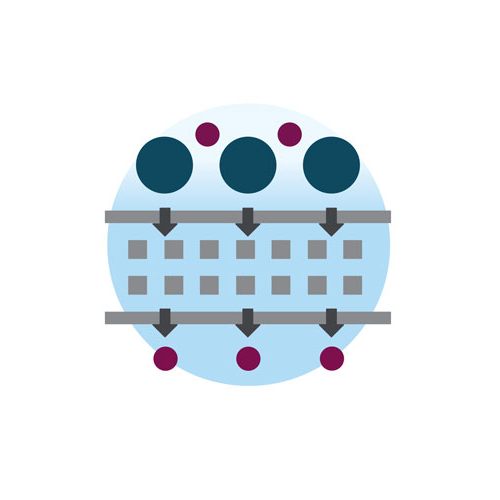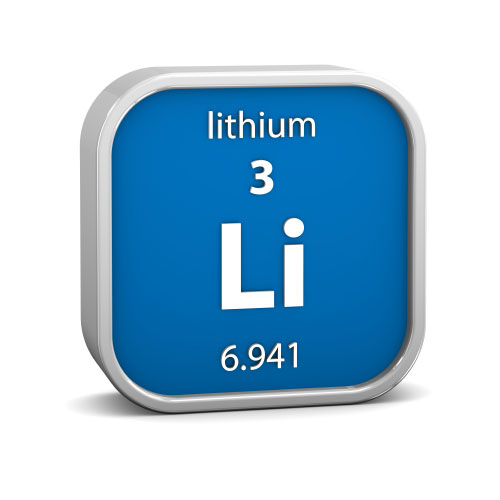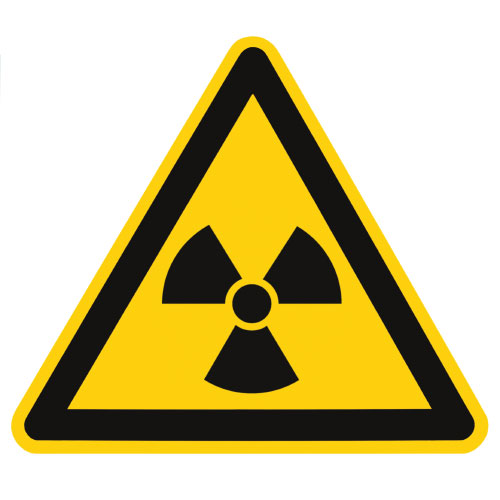- Traditional separation and extraction uses a mesh or membrane as a filter with pressure to force a liquid through leaving the larger behind. Nano-filters are also available for small particles.
- Reverse Osmosis (RO) uses a membrane as a filter and pressure to precipitate dissolved particles. Reversing the flow flushes the filter. They can become fouled preventing reverse flushing.
- Forward Osmosis works like RO but uses the osmotic pressure from a draw solution rather than applied pressure. This adds complexity, but allows filtration of higher concentrations, and reduces cost and fouling.
- Ion-exchange resins use polymeric beads of resin that attract the charged elements to be removed. There are 2 main types: cation exchange resins, (to exchange positively charged ions) and anion exchange resins, (to exchange negatively charged ions).
- Adsorption uses the ion charge of a substance to cause it to stick to or bond with a surface removing it from a liquid.

Novel Membrane-based Ion Extraction System
In our process a transmembrane gradient with concentration of one cation leads to coupled counter transport of this ion and another cation. For example, it can be Na+/Li+, or H+/Li+ exchange. If concentration difference of the first ion between two solutions is kept high enough, Li ions may be pumped from a large volume of dilute donor (feed) solution to the much smaller volume of acceptor (strip) solution up to saturation and then precipitation.
We do not need any transmembrane pressure or voltage. Essentially, we combine in one unit- operation ion exchange and extraction into the membrane on one side, and re-extraction on another side.
The rate is proportional to the membrane area. The process becomes continuous, much simpler, more efficient, smaller and cheaper than the ion-exchange columns, and easy to scale-up.
Therefore, our technology uses specially modified hollow fiber membranes, since they have very large surface areas. They are similar to ones uses in dialysis equipment as well as high pressure reverse osmosis systems, however ours are uniquely modified for each specific extraction.
Below you can see a photograph of a small pilot system with 160 square meters of surface area in a large tube that was made to economically extract copper ions from printed circuit board etching waste to produce copper sulphate from the waste in an environmentally friendly process.

Our NCX Technology
The Next-ChemX membranes (“NCX”) enable the continuous extraction transfer and concentration of targeted metal ions (such as lithium) from large liquid volumes.
The NCX Technology:
- operates at normal temperatures and pressures;
- processing is not batched but continuous;
- does not need an initial concentration by evaporation;
- does not need significant fresh water.
The NCX technology does not use:
- electrolysis, or
- costly ion-exchange resins, or
- expensive metal organic frameworks or
- other batch processes currently under development.
For Example our NCX technology is projected to be significantly more economical in both CAPEX and OPEX than conventional lithium production as well as the new technologies currently being developed, which use either expensive specially designed membranes or ion exchange resins.

Lithium Extraction
Demand for Lithium:
- 300,000 metric tons of lithium carbonate equivalent (“LCE”) produced per year.
- 3.5 million metric tons of demand per year for lithium is projected by 2035 representing a $45.5 billion annual market. (assuming $13,000/metric ton price for LCE)
Current Situation:
- Current process requires evaporation of brines over 12 to 24 months, wasting water, followed by several filtration/processing stages.
- Next-ChemX has discussed deploying a commercial pilot system of our NCX at a lithium mining operators brine field as soon as our laboratory demonstration produces detailed results so that economic projections can be shown on their brine samples.
- Pilot plant currently under construction to trial the extraction and to confirm the economic advantages.
Competition:
- Lilac Solutions has developed a proprietary ion exchange resin for Lithium and is in the process of a pilot test with a geothermal brine and a South American brine. They have stated they have a lower processing cost point of LCE than the conventional evaporation method.
- EnergyX has announced that it has developed a ‘mixed matrix’ membrane technology and has an LOI with a lithium brine producer in South America. They plan a tolling revenue model and have quoted a processing cost point of LCE that is lower than the conventional evaporation method.

BioOils Vegetable Oil Refining
Vegetable oils need refining to remove soluble fatty acids which have a bitter taste, and which cause the oil to go rancid so that shelf life is extended, and odor is removed.
- Conventionally this is done by ‘washing’ (mixing and soaking) with sodium hydroxide (NaOH), then waiting for up to two days in big settling tanks for the oil to separate.
- The process produces a toxic emulsion containing NaOH with fatty acids and some oil.
- BioFuels from palm oil must also be refined, since acids damage engines.
Proven Next-ChemX Technology:
- In a continuous process our membrane separates the Oil to one side of the membrane and the Fatty Acids in an alkaline solution on the other.
- The process is continuous and therefore quicker and significantly more economical.
- The initial small-scale pilot is tested and proven.
Market:
- Over 58 million metric tons/yr of edible oils
- Over 67 million metric tons/yr of oil for fuels
Current Situation:
- An understanding exists with a Ukrainian sunflower oil producer to trial a pilot system for 100 metric tons per day.

NEXT-Alchem. Radioactive Ion Extraction
Nuclear reactors produce water contaminated with a low concentration of radioactive ions. This radioactive waste is usually stored until economically feasible to concentrate the radioactive ions in a small footprint.
- At Fukushima in Japan, they have run out of storage and must get rid of over a million cubic meters of such water. They announced that they will have to dump in the sea within 2 years if no solution is found. Two market leaders in cleanup have failed to provide a solution for tritium removal.
- The UK has recently announced a similar problem and will have to dump the waste in the sea within 2 years if no solution is found.
- Following the 1986 Nuclear disaster, Ukraine also requires a radioactive water cleanup solution.
Next-ChemX technology has been proven to extract strontium, cesium and cobalt. We are currently testing for the removal of tritium that exists in the contaminated water in very low concentrations.
- In cooperation with a Ukrainian nuclear institute, we have agreed to test the cleaning of 800 cubic meters of radioactive water. If successful, this will lead to a government contract for cleanup.
- If successful in the tritium removal trial, we will possess the only technology for economically removing this to purify radioactive water completely, which is a known problem worldwide from nuclear plants.
What makes a Technology Revolution?
In the search to identify where these Key Technological Advances come from, we find two sources that help to predict the next:
- 1. Harnessing a new material has always brought about waves of change and improvement. It is so true that history defines progress by our use of materials: Stone Age... Bronze Age... Iron Age... Silicon Age...
- 2. But when it comes to processing technologies, Inspiration from Nature has brought about the greatest scientific advances. Optimized technologies copy nature.
